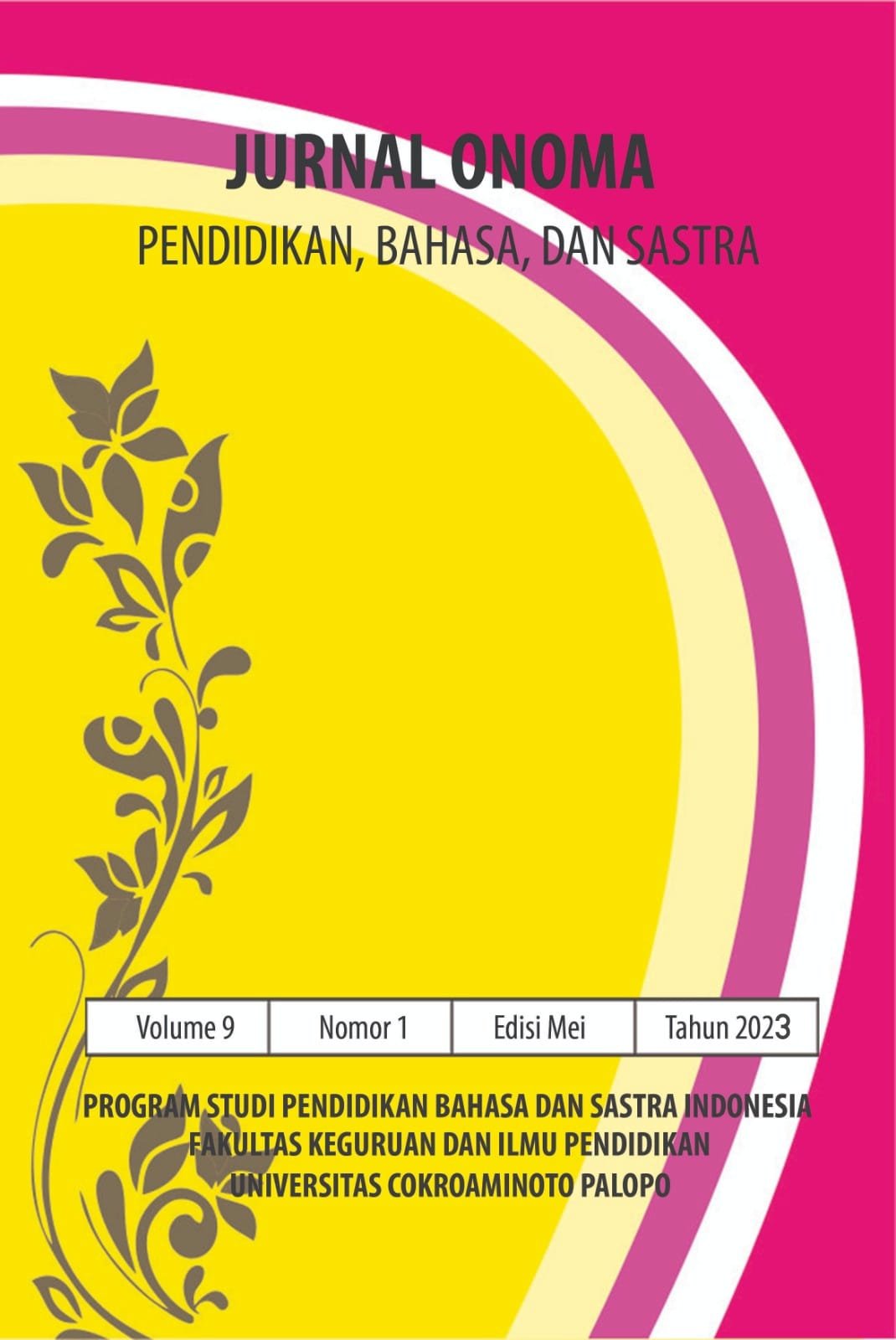Pengaruh Model Pembelajaran Peer-Instruction Flipped Classroom Berbantuan Google Sites dan Grammarly terhadap Keterampilan Menulis Bahasa Inggris dan Efikasi Diri Siswa Kelas VIII SMP
https://doi.org/10.30605/onoma.v9i1.2309
Keywords:
Writing, peer-instruction flipped, direct instructionAbstract
Penelitian ini bertujuan untuk menganalisis (1)adanya perbedaan antara keterampilan menulis Bahasa Inggris dan efikasi diri antara siswa yang belajar dengan model pembelajaran peer-instruction flipped classroom berbantuan Google sitess dan Grammarly dan model pembelajaran direct instruction, (2) perbedaan keterampilan menulis Bahasa Inggris antara siswa yang belajar dengan model pembelajaran peer-instruction flipped classroom dan model pembelajaran direct instruction, (3) perbedaan efikasi diri Bahasa Inggris siswa dengan penerapan model pembelajaran peer instruction flipped classroom dan model pembelajaran direct instruction. Populasi panelitian ini adalah siswa kelas VIII SMP Negeri 3 Selat tahun pelajaran 2022/2023 yang terdiri dari tujuh kelas. Pemilihan sampel dilakukan dengan teknik Random Sampling dimana dua kelas digunakan sebagai sampel. Penelitian ini merupakan penelitian quasi experiment dengan rancangan Non Equivalent Pretest-Posttest Control Group Design. Pengumpulan data dilakukan menggunakan tes keterampilan menulis dan kuisioner efikasi diri. Data yang diperoleh dianalisis dengan MANCOVA dengan keterampilan menulis dan efikasi diri awal sebagai kovariat. Hasil penelitian menunjukkan bahwa: (1) terdapat perbedaan antara keterampilan menulis Bahasa Inggris dan efikasi diri antara siswa yang belajar dengan model pembelajaran peer-instruction flipped classroom berbantuan Google sitess dan Grammarly dan model pembelajaran direct instruction, (2) terdapat perbedaan keterampilan menulis Bahasa Inggris antara siswa yang belajar dengan model pembelajaran peer-instruction flipped classroom dan model pembelajaran direct instruction, (3)terdapat perbedaan efikasi diri Bahasa Inggris siswa dengan penerapan model pembelajaran peer instruction flipped classroom dan model pembelajaran direct instruction.
Downloads
References
Arnold-Garza, S. (2014). The Flipped Classroom Teaching Model and Its Use for Information Literacy Instruction. Communications in Information Literacy, 8(1), 9. https://doi.org/10.15760/comminfolit.2014.8.1.161
Bandura, A. (1997). No Title. Efikasi Diri.
Brown, H. D. (2004). Language assessment : principles and classroom practices. 324.
Grammarly: Free Online Writing Assistant. (n.d.). Retrieved December 21, 2022, from https://www.grammarly.com/
Harmer, J. (2008). How to Teach English (Second Edition). ELT Journal, 62(3), 313–316. https://doi.org/10.1093/ELT/CCN029
Hasanah, M., Halim, A., Safitri, R., & Yusrizal, Y. (2021). The Effect of Edmodo-Based Flipped Classroom Learning Model on Students’ Learning Outcomes on the Topic of Sound Waves. Jurnal Penelitian Pendidikan IPA, 7(SpecialIssue), 180–186. https://doi.org/10.29303/JPPIPA.V7ISPECIALISSUE.1061
Yuliani, Y., Hasanuddin, H., Safrida, S., Khairil, K., & Pada, A. U. T. (2021). Implementasi Model Discovery Learning Dipadu Modul Sistem Ekskresi Berbasis Konstruktivisme untuk Meningkatkan Keterampilan Berpikir Kritis Peserta Didik. Jurnal Pendidikan Sains Indonesia, 9(3), 376–390. https://doi.org/10.24815/jpsi.v9i3.19965
Zamnah, L. N. (2019). Implementation of peer instruction flipped classroom to improve self-efficacy of underprivileged students. Jurnal Pendidikan Dan Pengajaran, 52(2), 69–74. https://doi.org/10.23887/JPP.V52I2.17879
Downloads
Published
How to Cite
License
In submitting the manuscript to the journal, the authors certify that:
- They are authorized by their co-authors to enter into these arrangements.
- The work described has not been formally published before, except in the form of an abstract or as part of a published lecture, review, thesis, or overlay journal.
- That it is not under consideration for publication elsewhere,
- That its publication has been approved by all the author(s) and by the responsible authorities – tacitly or explicitly – of the institutes where the work has been carried out.
- They secure the right to reproduce any material that has already been published or copyrighted elsewhere.
- They agree to the following license and copyright agreement.
License and Copyright Agreement
Authors who publish with Onoma Journal: Education, Languages??, and Literature agree to the following terms:
- Authors retain copyright and grant the journal right of first publication with the work simultaneously licensed under Creative Commons Attribution License (CC BY 4.0) that allows others to share the work with an acknowledgment of the work's authorship and initial publication in this journal.
- Authors are able to enter into separate, additional contractual arrangements for the non-exclusive distribution of the journal's published version of the work (e.g., post it to an institutional repository or publish it in a book), with an acknowledgment of its initial publication in this journal.
- Authors are permitted and encouraged to post their work online (e.g., in institutional repositories or on their website) prior to and during the submission process, as it can lead to productive exchanges, as well as earlier and greater citation of published work.

















